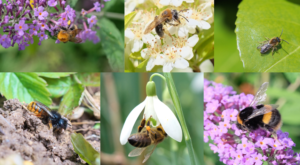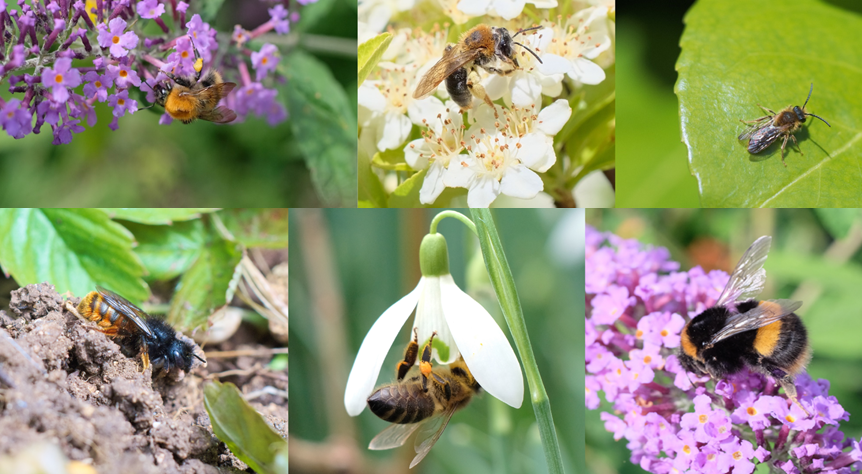As winter draws in, it is evident in the Nectar Gardens here at Quince Honey Farm that there are fewer bees about. One might then wonder what honey bees do during the winter months and also where our wild bees go?
The challenge that many animals face come winter is not only a drop in temperature but the accompanying lack of food. Bees are herbivores, meaning they rely on plants for their food, specifically their nectar and pollen. Most plants have evolved to produce flowers during the summer, giving them the best chance to be pollinated. This means that even if the temperature is warm enough for the bees to fly during winter, there is often little for them to forage on.
To overcome this problem, honey bees have evolved a unique solution: honey! Unlike other species of bees which only collect small amounts of nectar, honey bees collect as much as they can, often vast quantities. Converting the nectar to honey and sealing it in wax allows it to be stored indefinitely without going bad. This surplus of honey allows the bees to stay well fed all the way through to spring when flowers bloom once again. To stay warm, the colony clusters together in a ball around the combs of honey. In this cluster the bees slowly eat their stores and the queen can continue to lay eggs. On warmer days some bees will venture out to collect water but for the most part the colony keeps warm inside the hive.
Other bee species such as bumblebees and solitary bees have evolved different strategies. Bumblebees and social wasps reduce their colony size in autumn leaving only queens to ‘overwinter’. These queens leave their colonies to mate before hunkering down in small, sheltered crevices to hibernate. Hibernation is a way of reducing metabolism by entering a deep sleep-like state. This reduces their energy consumption and allows them to go for a long period of time without eating.
Most solitary bee adults don’t go through winter at all but instead lay their eggs in sheltered crevices where they hatch and develop over winter before emerging in spring. Small amounts of pollen and nectar are collected by the adult bee and left for their larvae to feed on once they hatch. Many species of wasp have also evolved this strategy and are active for only a couple months, avoiding the harsher periods of the year.
Providing habitats such as bee hotels and leaving undisturbed areas of the garden are great ways to help our native bees and other wildlife get through the winter. Having a diverse assortment of plants, especially those that bloom late and early in the year will also provide a constant source of nectar and pollen for the many different species of bee that emerge through the year. It is really important that we support our native bees as much as we can in our gardens, while their natural habitats shrink due to intensive agriculture and urbanization. If you’d like to find out more about how to make your garden more bee-friendly, there are some great resources available from our friends at the Bumblebee Conservation Trust and the British Beekeepers Association with useful advice and tips. Please click on the links below for more information:
https://www.bumblebeeconservation.org/gardeningadvice/
https://www.bbka.org.uk/Blogs/planting-for-bees-blog
Blog written by George Staniforth, Beekeeper at Quince Honey Farm

All photographs © George Staniforth.
Bees featured in photographs (clockwise from top left): Common carder bee, Orange-tailed mining bee, Chocolate mining bee, Buff-tailed bumblebee, Honey bee on snow drop, Red mason bee.

Comments
comments for this post are closed